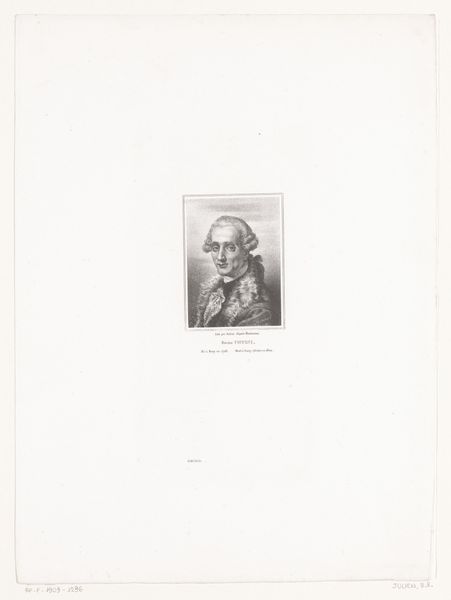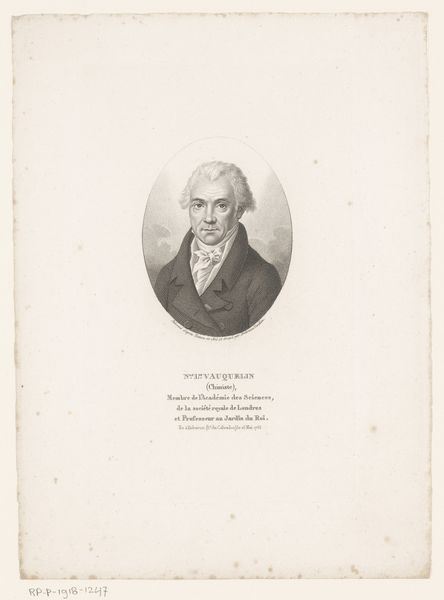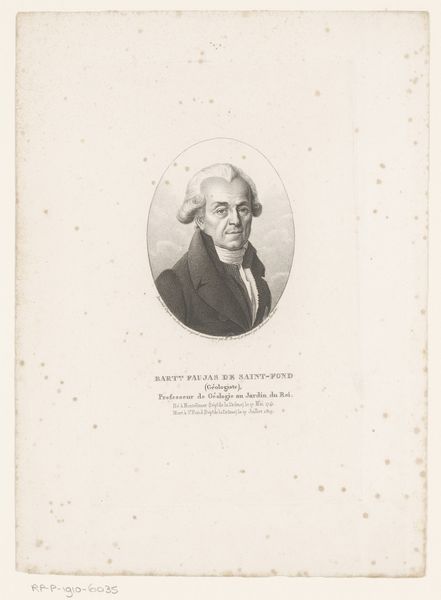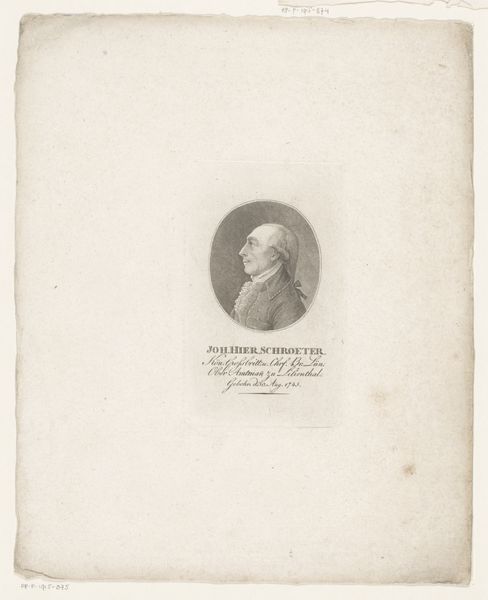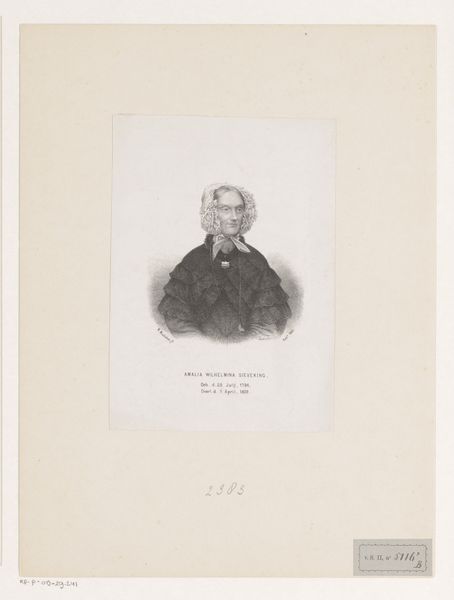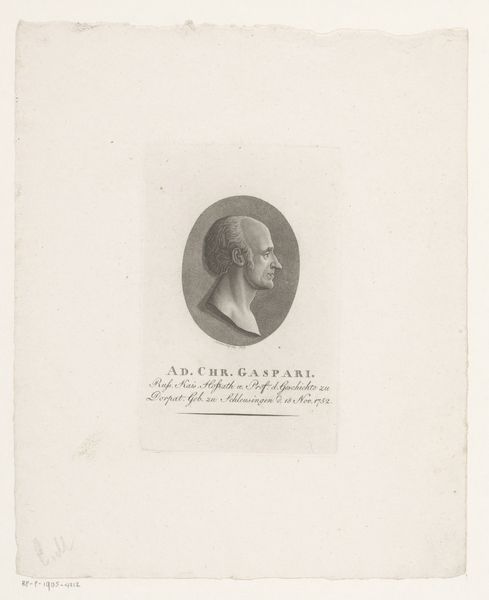
print, engraving
#
portrait
#
neoclacissism
# print
#
engraving
#
realism
Dimensions: height 215 mm, width 139 mm
Copyright: Rijks Museum: Open Domain
Editor: This is a print, an engraving actually, of Pierre-Jacques-Thomas Cochon-Duvivier, made sometime between 1798 and 1841 by Ambroise Tardieu. The figure is framed in an oval, and it feels very… serious. What do you see in this piece, focusing on its form? Curator: The stark lines and meticulous detail, typical of engraving, emphasize a calculated, almost austere portrayal. Consider the strategic use of light and shadow. Note how Tardieu uses contrasting tones to sculpt Cochon-Duvivier’s face and attire. Editor: Yes, the sharp contrasts definitely give it a neoclassical feel. Is that typical of portraiture from this time? Curator: Indeed. Neoclassicism, with its emphasis on order and clarity, dictated a certain level of restraint. The precision of the engraving, the carefully composed lines, they all contribute to a sense of controlled representation. We observe a prioritization of idealized form over overt expressiveness. Notice how the texture of the paper interacts with the ink to define the image. Editor: So, it's more about the precise representation than trying to evoke an emotional response? Curator: Precisely. It prioritizes technical mastery and idealized representation rooted in structure and design. The medium itself becomes an integral element in conveying the subject's status and intellect. Consider the circular boundary within which his face resides, further highlighting its presence through confinement. Editor: That's a fascinating way to see it, considering not just the subject but the material and its structured qualities. Curator: By understanding form and material, we gain a deeper appreciation for the artist's choices and their impact. Editor: I've learned a lot by analyzing its structure.
Comments
No comments
Be the first to comment and join the conversation on the ultimate creative platform.



